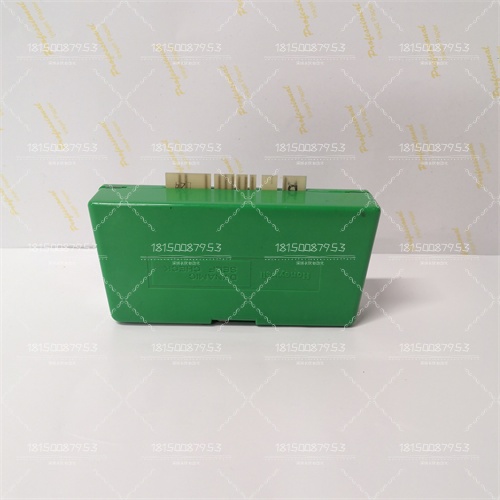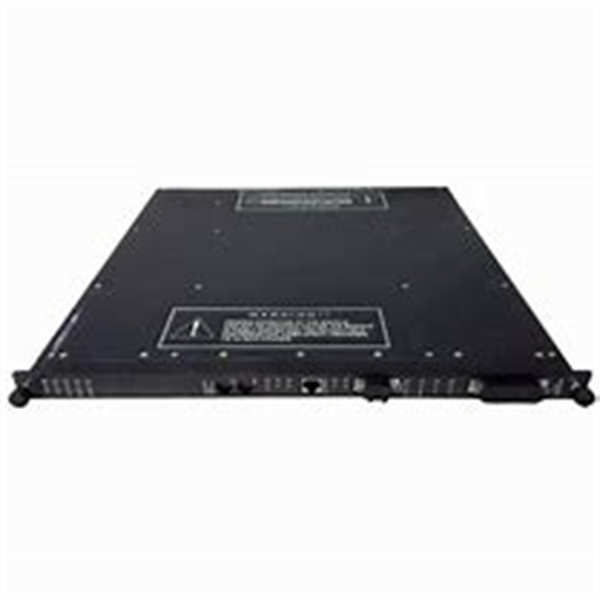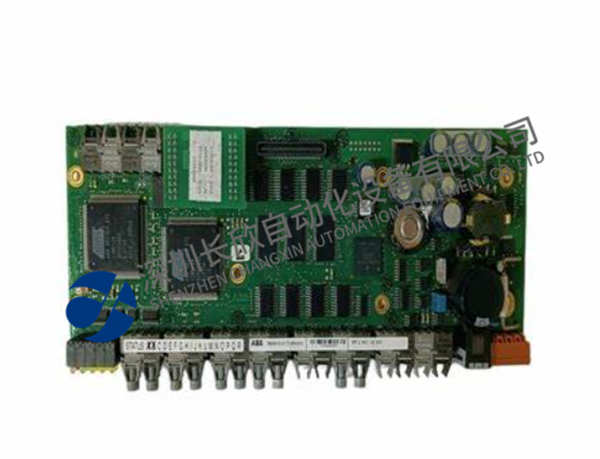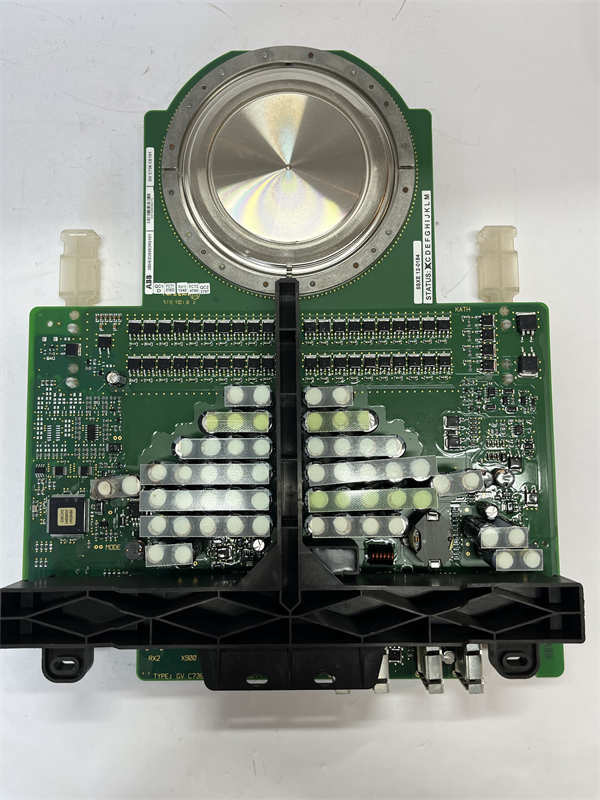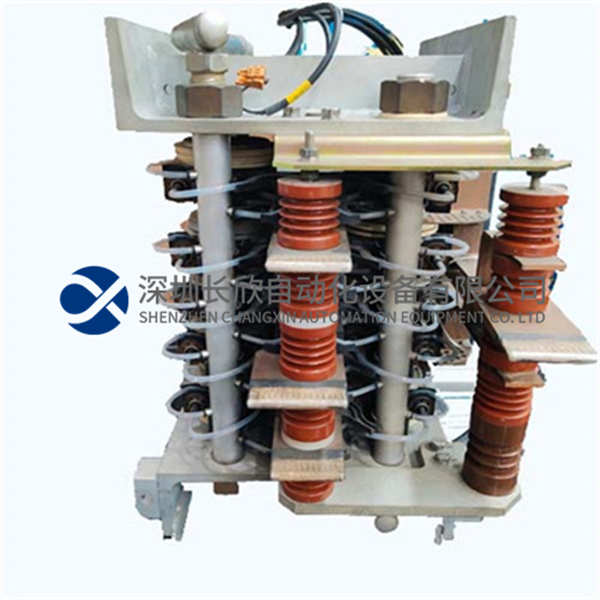描述
HONEYWELL R7247C1001产品详情
一、产品概述
Honeywell R7247C1001是Honeywell Controls推出的一款高精度电子式燃烧安全控制器,属于Universal Burner Control(UBC)系列。该控制器专为工业及商业燃烧设备设计,如锅炉、加热炉、烘干机、热风炉等,用于监测燃烧过程、控制燃气/燃油阀门、确保安全点火及火焰稳定。其核心功能包括火焰检测、点火序列控制、安全联锁保护,并符合EN 298、NFPA 86等国际燃烧安全标准,广泛应用于石油化工、电力、食品加工、建材等行业。
二、核心功能与技术规格
1.火焰检测与信号处理
检测方式:
支持紫外线(UV)、红外线(IR)或电离探针(Ionization Probe)三种火焰检测技术(需根据燃料类型和应用场景选配传感器)。
UV检测:适用于燃气燃烧器,对紫外线辐射敏感,可快速响应火焰熄灭(响应时间<0.5秒)。
IR检测:适用于燃油燃烧器,对红外辐射敏感,抗干扰能力强(如阳光、焊接火花)。
电离探针:通过检测火焰中的离子电流(μA级)判断火焰状态,适用于小型燃气设备。
信号处理:
内置微处理器(MCU),实时分析火焰信号强度与稳定性,自动补偿背景噪声(如炉膛反射光)。
支持双通道火焰检测(可选),主备通道自动切换,提高可靠性。
2.点火与燃烧控制
点火序列:
支持直接点火或预吹扫+点火两种模式(可配置)。
预吹扫阶段:强制通风30~180秒(时间可调),清除炉膛内可燃气体,防止爆燃。
点火阶段:控制点火变压器输出高压脉冲(8~12kV),点燃主燃料。
燃料阀控制:
驱动电磁阀(Solenoid Valve)或电动球阀,支持单阀/双阀控制(如燃气安全阀+调节阀)。
阀门开启/关闭时间可编程(0.1~10秒),适应不同燃料特性。
3.安全联锁与保护
三级保护机制:
一级报警(Warning):火焰信号减弱但未熄灭,触发HMI提示或远程报警。
二级报警(Alarm):火焰熄灭,立即关闭主燃料阀,并启动后吹扫(清除残余燃料)。
三级保护(Lockout):连续3次点火失败或关键传感器故障,锁定控制器,需手动复位。
联锁输入:
支持8路可编程联锁信号(如空气压力开关、燃气压力开关、炉膛负压开关),任一信号异常即触发安全停机。
4.通信与扩展功能
现场总线通信:
支持Modbus RTU/TCP或BACnet协议,可与PLC、DCS、SCADA系统集成,实现远程监控与参数调整。
数据记录:
内置非易失性存储器(NVM),记录最近100次点火/停机事件(包括时间、故障代码、火焰信号曲线)。
HMI接口:
提供本地LCD显示屏(可选),显示火焰强度、阀门状态、故障代码,支持按键导航参数设置。
三、硬件设计与环境适应性
1.机械结构
尺寸与安装:
DIN导轨安装(35mm标准轨),尺寸144mm(宽)×100mm(高)×50mm(深),节省控制柜空间。
重量约0.8kg,材质为阻燃塑料(UL94 V-0),符合IP20防护等级(防触电,不防尘/水)。
接线端子:
采用弹簧式接线端子,支持0.5~2.5mm²导线,无需工具即可快速插拔。


HONEYWELL R7247C1001 Product Details
I.Product Overview
Honeywell R7247C1001 is a high-precision electronic combustion safety controller launched by Honeywell Controls,belonging to the Universal Burner Control(UBC)series.The controller is designed for industrial and commercial combustion equipment,such as boilers,heating furnaces,dryers,hot air furnaces,etc.,to monitor the combustion process,control gas/oil valves,and ensure safe ignition and flame stability.Its core functions include flame detection,ignition sequence control,safety interlock protection,and comply with international combustion safety standards such as EN 298 and NFPA 86.It is widely used in petrochemical,power,food processing,building materials and other industries.
II.Core functions and technical specifications
1.Flame detection and signal processing
Detection method:
Supports three flame detection technologies:ultraviolet(UV),infrared(IR)or ionization probe(Ionization Probe)(sensors need to be selected according to fuel type and application scenario).
UV detection:Applicable to gas burners,sensitive to ultraviolet radiation,and can quickly respond to flame extinction(response time<0.5 seconds).
IR detection:Applicable to oil burners,sensitive to infrared radiation,and strong anti-interference ability(such as sunlight,welding sparks).
Ionization probe:Determine the flame state by detecting the ion current(μA level)in the flame,suitable for small gas equipment.
Signal processing:
Built-in microprocessor(MCU),real-time analysis of flame signal strength and stability,automatic compensation of background noise(such as furnace reflection light).
Support dual-channel flame detection(optional),automatic switching of main and standby channels to improve reliability.
2.Ignition and combustion control
Ignition sequence:
Support direct ignition or pre-purge+ignition two modes(configurable).
Pre-purge stage:forced ventilation 30~180 seconds(time adjustable)to remove combustible gases in the furnace to prevent deflagration.
Ignition stage:control the ignition transformer to output high-voltage pulses(8~12kV)to ignite the main fuel.
Fuel valve control:
Drive solenoid valve or electric ball valve,support single valve/dual valve control(such as gas safety valve+regulating valve).
Valve opening/closing time is programmable(0.1~10 seconds)to adapt to different fuel characteristics.
3.Safety interlock and protection
Three-level protection mechanism:
Level 1 alarm(Warning):The flame signal weakens but does not go out,triggering HMI prompt or remote alarm.
Level 2 alarm(Alarm):The flame goes out,immediately close the main fuel valve,and start post-purge(remove residual fuel).
Level 3 protection(Lockout):3 consecutive ignition failures or key sensor failures,lock the controller,and need to be manually reset.
Interlock input:
Support 8 programmable interlock signals(such as air pressure switch,gas pressure switch,furnace negative pressure switch),any abnormal signal will trigger a safety shutdown.
4.Communication and expansion functions
Fieldbus communication:
Supports Modbus RTU/TCP or BACnet protocol,can be integrated with PLC,DCS,SCADA system to achieve remote monitoring and parameter adjustment.
Data recording:
Built-in non-volatile memory(NVM),records the last 100 ignition/shutdown events(including time,fault code,flame signal curve).
HMI interface:
Provides a local LCD display(optional)to display flame intensity,valve status,fault code,and supports key navigation parameter setting.
III.Hardware design and environmental adaptability
1.Mechanical structure
Dimensions and installation:
DIN rail installation(35mm standard rail),dimensions 144mm(width)×100mm(height)×50mm(depth),saving control cabinet space.
Weight is about 0.8kg,made of flame-retardant plastic(UL94 V-0),meets IP20 protection level(anti-electric shock,not dust/water proof).
Terminal blocks:
Spring-type terminals are used to support 0.5~2.5mm²wires and can be quickly plugged in and out without tools.
ABB Model: GBU72 3BHE055094R0002 Model: 3BHE055094R0002 GBU72 Model: GBU72 Model: 3BHE055094R0002 Model: 3BHE031197R0001 Model: 3BHB030310R0001 Model: 73BHE055094R0002 GBU72 Model: 73BHE055094R0002 Model: GBU72 Model: ABB PCS6000 PRODUCT FAMLIY ABB 5SHY4045L0006 3BHB030310R0001 3BHE039203R0101 GVC736CE101

